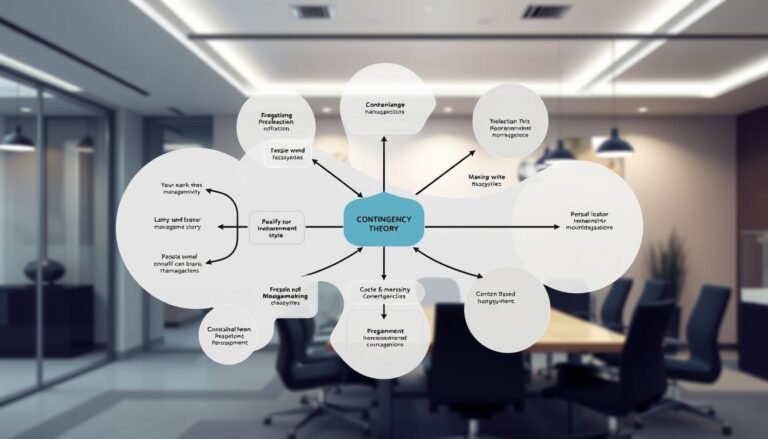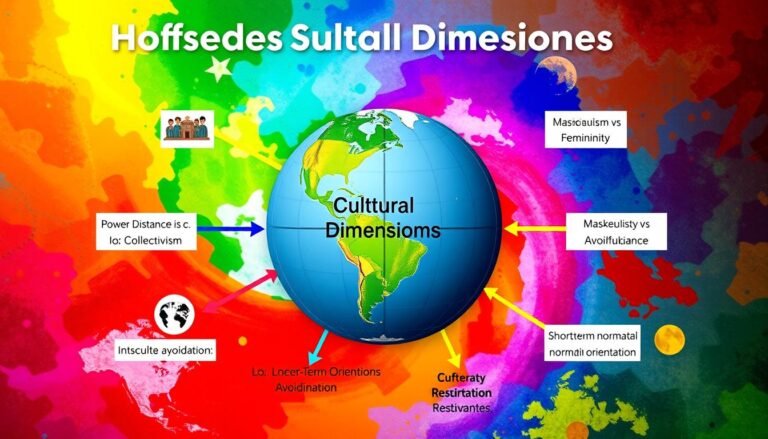Kaizen: Continuous Improvement for Success
Have you ever noticed why some companies do well without much effort, while others just can’t seem to move forward? It might be because they use Kaizen, a way to keep getting better. This method focuses on small, steady changes to make things run smoother and more efficiently. It’s all about making things better bit by bit, not trying to change everything at once.
Kaizen started in Japan after World War II and changed the way factories worked. Now, it’s important in many areas, like healthcare. This article will show you what Kaizen is, where it came from, and how it can make your business better and more sustainable.
Key Takeaways
- Kaizen promotes small, ongoing positive changes leading to significant improvements.
- The methodology emphasizes cultural participation and accountability at all employee levels.
- Adoption of Kaizen in various sectors has enhanced operational efficiency and innovation.
- Effective implementation requires documentation and standardized processes for lasting results.
- Building a culture of continuous improvement enhances teamwork and employee morale.
Understanding Kaizen and Its Origins
Kaizen is a philosophy that focuses on making things better over time. It’s widely used in manufacturing and service sectors. Exploring its definition, history, and link to the lean methodology shows its wide impact.
Definition of Kaizen
The word “Kaizen” comes from Japanese. “Kai” means change and “zen” means good, so it means “change for the better.” It’s about making small improvements in processes and products by getting everyone involved. This method encourages small steps towards betterment, building a culture of teamwork and responsibility.
Historical Background of Kaizen
After World War II, Japan faced economic issues. American management ideas, brought in by experts like W. Edwards Deming, helped Japan improve its industries. Taiichi Ohno introduced the Toyota Production System (TPS) around 1945 to make things more efficient and reduce waste. This started a big change that helped Japan grow into the second-largest economy by the 1980s.
Kaizen and Lean Methodology
Kaizen is closely tied to the lean methodology, which focuses on cutting waste to add more value. Kaizen’s ideas match well with lean manufacturing, using tools like 5S, Just-In-Time (JIT) inventory, and Kanban. These tools help make work flow better, improve product quality, and engage employees more. Companies like Toyota show how well Kaizen works by making it a key part of their culture.
Implementing Kaizen for Operational Excellence
Creating a culture that values Kaizen is key to operational excellence. It boosts employee engagement and makes everyone feel responsible for improving things. Every idea shared can lead to better solutions, making the whole organization better.
Creating a Kaizen Culture in Your Organization
To build a strong Kaizen culture, open communication and support from leaders are crucial. Employees should feel safe sharing their thoughts. When everyone’s ideas are valued, the drive for constant improvement grows.
The Seven Steps of the Kaizen Cycle
The Kaizen cycle has seven steps to help organizations improve:
- Involve employees in the process.
- Identify and define the problems.
- Create potential solutions for those problems.
- Test the suggested solutions.
- Analyze the results of the tests.
- Adopt and implement successful changes.
- Begin the cycle anew with fresh challenges.
Using the Kaizen cycle helps organizations tackle issues and get better over time.
Engagement and Empowerment of Employees
Employee engagement is key to Kaizen success. When workers help improve things, they feel better and work better together. Companies that focus on this see big wins, like better processes and more done.
Tools like the PDCA cycle help track progress and spot what needs work. Techniques like SWOT and Pareto Analysis help pick the right projects. A clear plan, like a Gantt Scheme, makes managing these projects easier, keeping the path to excellence clear.
| Kaizen Project Types | Duration | Focus Area |
|---|---|---|
| Before-Kaizen Projects | 8 Days (avg.), 1-20 Days (range) | Initial Process Assessment |
| Focused (Kobetsu) Kaizen | Short to Medium-Term | Specific Improvements |
| System (Kaikaku) Kaizen | 120 Days (avg.), 60-180 Days (range) | Comprehensive System Overhaul |
Using Kaizen makes companies better at handling challenges and keeps them ready for change.
Advantages of Kaizen in Business Efficiency
Kaizen brings big benefits to businesses, making them run smoother and better. It encourages a culture of always getting better. This leads to better processes and quality across the board.
Even small changes can make a big difference in how well a business works. This proactive way of thinking helps companies stay ahead.
Improved Process and Quality
Kaizen is great for making processes better. It helps businesses look at their workflows closely. This way, they can spot and cut out waste and find ways to work smarter.
This focus on quality means fewer mistakes and better products. Companies like Toyota have seen huge gains in efficiency and competitiveness by using Kaizen.
Enhanced Employee Morale and Teamwork
Kaizen also boosts employee morale. When employees are part of the improvement process, they feel more connected to their work. They take more pride in what they do.
Working together on problems and decisions builds a strong team spirit. This teamwork leads to better results and stronger bonds among coworkers. It creates a positive work environment.
Long-Term Benefits of Continuous Improvement
Embracing Kaizen can change how a company works for the long haul. It makes businesses more agile and ready to adapt to changes. This flexibility helps them stay efficient as the market evolves.
Over time, customers will be happier and more loyal. This leads to ongoing success and builds trust with the community.
Challenges and Considerations in Kaizen Adoption
Adopting Kaizen can bring big improvements, but it has its challenges. Organizations often face hurdles that make it hard to implement this philosophy well. Cultural resistance and communication barriers are two big issues.
Cultural Resistance and Communication Barriers
About 70% of staff often resist change when new Kaizen methods are brought in. This resistance comes from fears of changing routines or losing their jobs. If these cultural resistance issues aren’t tackled, Kaizen efforts might not work well.
Good communication is key to beating these challenges. Workers need to know why Kaizen is important and what they do in it. If communication is poor, it can cause confusion and make people not want to join in. It’s important for companies to work on these communication barriers to build a team spirit.
The Importance of Management Commitment
Management commitment is vital for Kaizen to work. Without leader support, efforts can lose direction and credibility. Leaders who act as role models and promote openness help create a place where constant improvement is possible.
Not having enough resources can also hurt Kaizen efforts. Sometimes, you need about 20% more resources to make it work. Training is also crucial, as not knowing enough can slow down acceptance. If top management doesn’t really get it, workers might see Kaizen as just words.
Having a clear Kaizen process helps keep focus and consistency. Without a plan, you might just make small changes, which can stop innovation. A structured approach helps keep organizations on track with Kaizen and its benefits over time.
| Challenge | Description | Impact |
|---|---|---|
| Cultural Resistance | Employees’ fear of change due to routine disruptions. | Around 70% may resist implementing new methodologies. |
| Management Commitment | Insufficient leader support impedes direction. | 30% of initiatives may lose momentum without reinforcement. |
| Resource Allocation | Need for a 20% increase in resources for effective implementation. | Helps facilitate a successful Kaizen process. |
| Communication Barriers | Poor communication can lead to confusion about roles. | Causes disengagement from employees, hindering progress. |
| Structure and Discipline | Lack of a structured approach may result in inconsistent follow-up. | Organizations may not fully challenge the status quo. |
Conclusion
Kaizen is a key idea that pushes for constant betterment. It gives a strong plan for companies aiming for top performance. By making small changes in many areas, companies can use resources better and work more efficiently. This makes the workforce more flexible and quick to respond.
Kaizen helps cut down on waste, like less waiting and too much stock. It also makes workers feel important and valued, which makes them happier in their jobs. This approach brings people together and helps them work better as a team.
Working together, teams come up with new ideas and make processes smoother. This teamwork boosts morale and makes workers feel like they own their tasks. It also makes the workplace safer and healthier.
However, starting Kaizen can face hurdles, like resistance from the culture and the need for management support. Yet, the lasting gains in making businesses run better are clear. As markets change, using Kaizen’s ideas is key for companies to stay ahead and succeed.
Source Links
- What is Kaizen (Continuous Improvement)?
- Continuous Improvement With Kaizen: 9 Tips for Success
- Understanding Continuous Improvement | KAIZEN™ Article
- The History of Kaizen
- Kaizen: Understanding the Japanese Business Philosophy
- Operational Excellence-Kaizen Implementation Guide – trex Digital Manufacturing
- Operational Excellence Improvement |KAIZEN™ Article
- Mastering Kaizen and Lean Management | KAIZEN™️ Article
- Kaizen method: how achieve business efficiency | Kilpatrick
- Kaizen Benefits | DuraLabel
- The benefits of Kaizen for your business | i-nexus
- What are some of the common pitfalls or barriers to Kaizen adoption and how can you overcome them?
- The main problems we may face when implementing KAIZEN into production
- Unlocking Organizational Excellence: The Power of Kaizen
- Kaizen Continuous Improvement | Kaizen Process | SurveySparrow
- Kaizen: Continuous Improvement with the Kaizen Method







